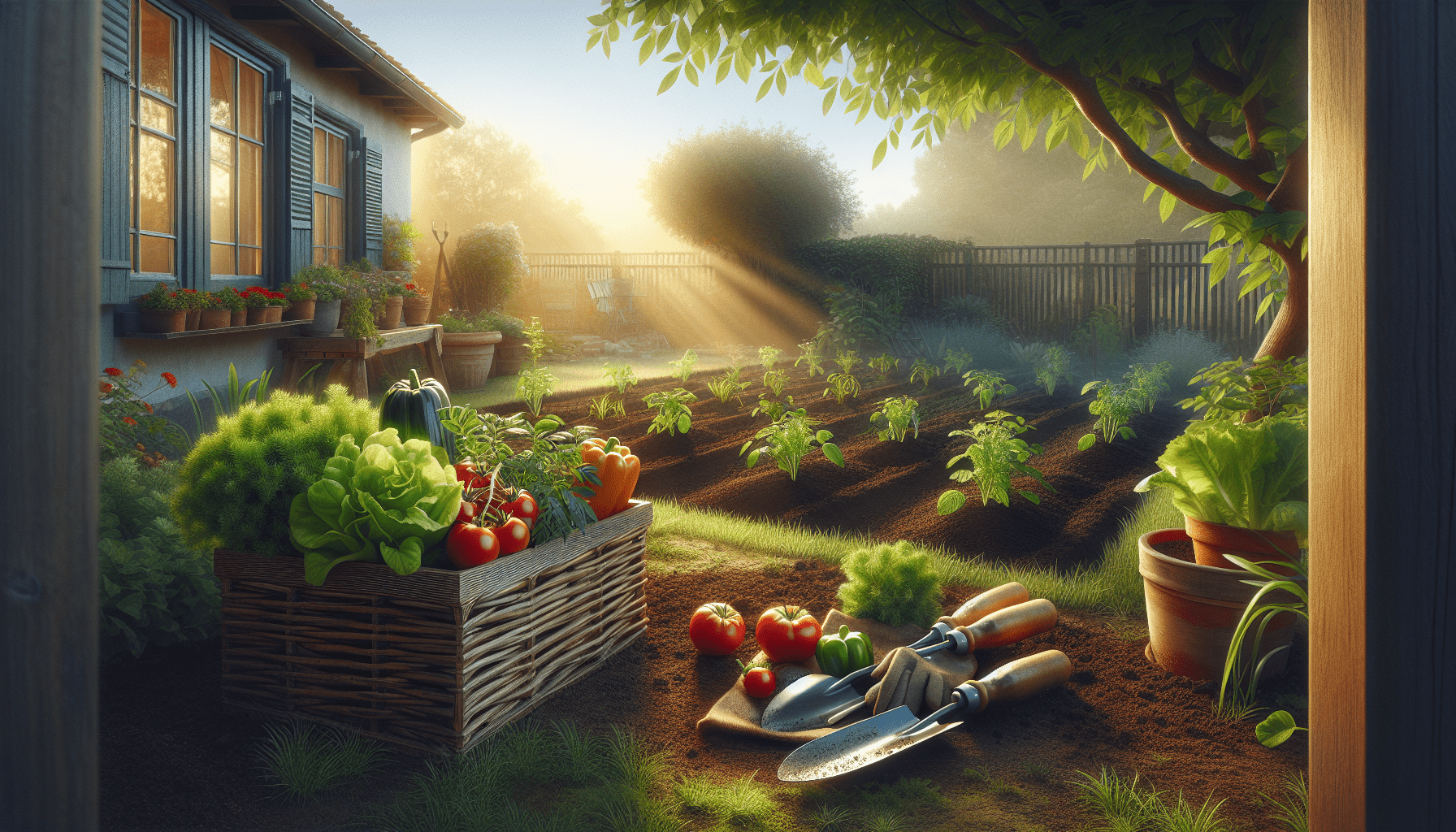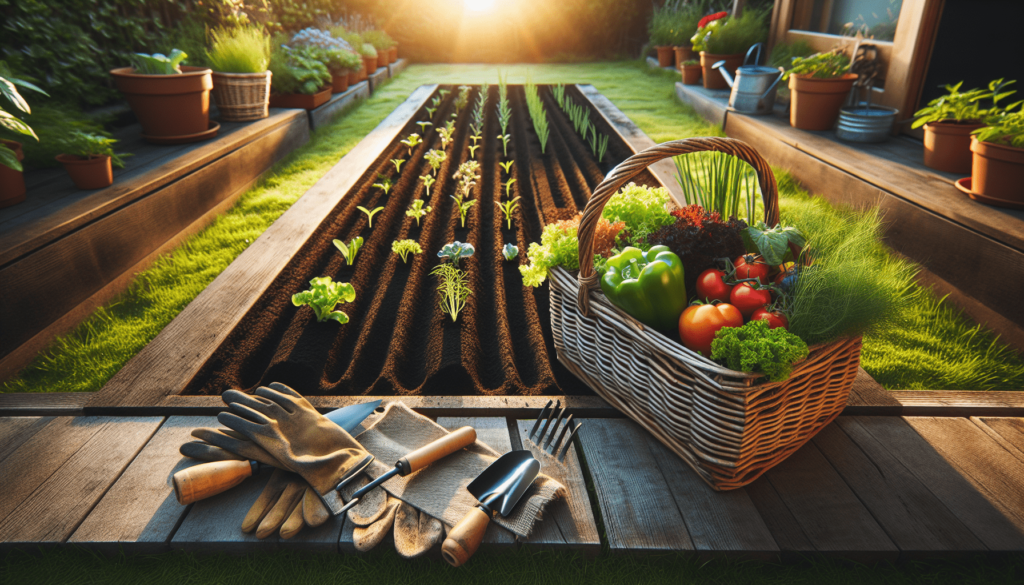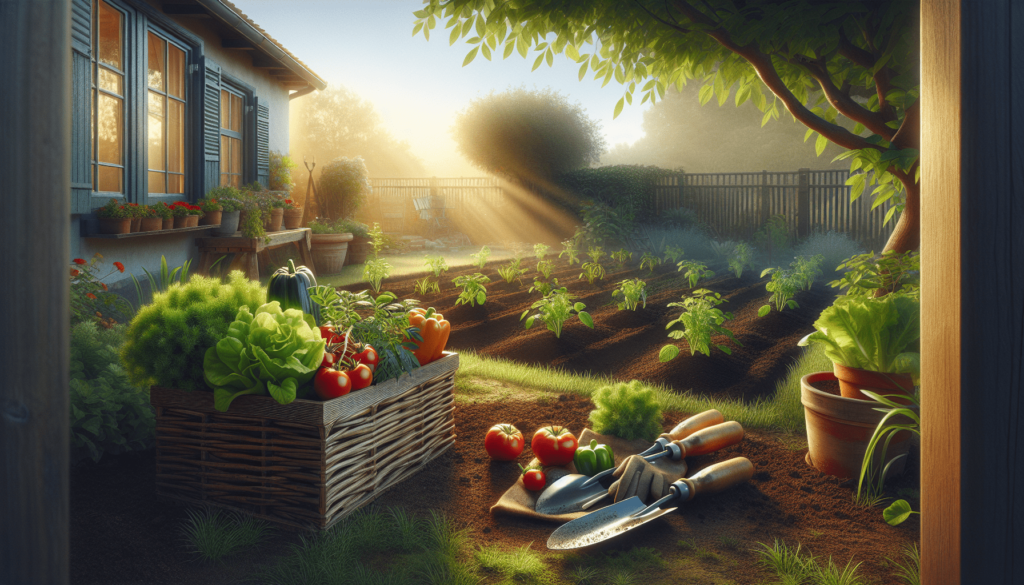
Starting a vegetable garden is a rewarding adventure that we can all embark on together. Whether we’re seasoned gardeners or just starting out, the process of planting and nurturing our very own produce can be both exciting and nourishing. We’ll explore the basics of selecting the perfect spot, preparing the soil, choosing the right vegetables, and tending to our garden to ensure a bountiful harvest. Join us as we dig into this delightful journey and discover the joys of growing our own fresh and healthy vegetables. Have you ever dreamed about plucking fresh tomatoes off the vine, pulling up crisp carrots from the earth, or gathering bundles of vibrant leafy greens right from your backyard? We have, and that’s why we’re here to help you turn that dream into a reality. Starting a vegetable garden is not just a rewarding hobby but also a fantastic way to ensure that your family enjoys fresh, nutrient-packed produce all year round.
Gardening might seem daunting at first, but we’re here to guide you every step of the way. By the end of this article, you’ll have a comprehensive understanding of what it takes to establish and maintain a thriving vegetable garden. Let’s dig in!
Why Grow Your Own Vegetables?
Before we get into the nuts and bolts of how to start a vegetable garden, let’s chat about why you might want to take the plunge. Growing our own vegetables not only provides us with fresh and nutritious produce but also allows us to engage in a fulfilling and environmentally friendly activity.
Freshness and Nutrition
When we grow our own vegetables, we have control over every step of the process. This means we can ensure that no harmful chemicals are used, and our vegetables are harvested at the peak of ripeness. Freshly picked vegetables are more flavorful and retain higher nutritional value compared to store-bought varieties.
Cost-Saving
While there’s an initial investment in seeds, soil, and tools, tending our own vegetable garden can save us money in the long run. By reducing our grocery bills and growing high-value crops like herbs and heirloom varieties, the savings can quickly add up.
Environmental Impact
Growing vegetables reduces our carbon footprint since we are less reliant on transport-heavy grocery supply chains. Moreover, practicing organic gardening techniques promotes biodiversity and helps us avoid contributing to the pesticide and chemical runoff that plagues many commercial farms.
Quality Time and Mental Health
Gardening can be a family affair—a fantastic opportunity to spend quality time together while teaching children about nature and responsibility. On a personal level, working in the garden can be a therapeutic escape from the hustle and bustle of daily life.
Planning Your Vegetable Garden
Once we are committed to starting a vegetable garden, good planning is the essential first step to success. Let’s walk through some of the fundamental considerations.
Choosing the Right Location
The location of our garden will significantly affect the success of our vegetable plants. Ideally, choose a spot that meets the following criteria:
1. Sunlight: Most vegetables need at least 6-8 hours of direct sunlight per day. Ensure that the chosen location gets ample sunlight.
2. Soil: The soil should be well-draining and rich in organic matter. We may need to amend our soil depending on its current condition.
3. Accessibility: Convenience is key. The closer the garden is to our home, the more likely we are to maintain it regularly.
4. Water Source: A nearby water source is crucial to make watering manageable, especially during hot or dry spells.
Deciding What to Grow
Deciding what vegetables to grow can be both exciting and overwhelming. Consider the following when making our selection:
1. Climate: Our local climate will dictate what we can grow and when. Check our hardiness zone and average frost dates to plan effectively.
2. Space: Certain vegetables require more room than others. Plan according to the available space in our garden.
3. Preferences: Grow what we love to eat! There’s little sense in dedicating garden space to crops no one in the household enjoys.
4. Ease of Growth: For beginners, start with vegetables known for ease of growth, such as tomatoes, lettuce, radishes, and beans.
Drawing Up a Garden Plan
Planning out our garden on paper can help us visualize the layout and spacing. Here are the steps to create an effective garden plan:
- Measure the Area: Determine the dimensions of the available space.
- Sketch the Layout: Draw a rough sketch of the garden with different sections for each type of vegetable.
- Consider Plant Spacing: Use the seed packets or growth guides to ensure proper spacing between plants.
- Plan for Rotation: Consider crop rotation to maintain soil health. Avoid planting the same crops in the same location year after year.

Preparing the Soil
Healthy soil is the backbone of a thriving garden. Let’s discuss how we can prepare our soil for planting.
Testing the Soil
Before we begin, it’s essential to test the soil to determine its pH and nutrient levels. Soil tests can be done using kits available at garden centers or by sending samples to a local cooperative extension service.
Amending the Soil
Based on the soil test results, we might need to amend the soil. Here are some common amendments and their purposes:
| Amendment | Purpose |
|---|---|
| Compost | Adds organic matter and nutrients |
| Lime | Raises soil pH levels (for acidic soils) |
| Sulfur | Lowers soil pH levels (for alkaline soils) |
| Manure | Adds organic matter and natural fertilizers |
| Peat Moss | Improves soil structure and moisture retention |
| Sand | Enhances drainage in heavy clay soils |
Tilling and Smoothing
Once soil amendments are added, till the soil to break up clumps and remove rocks and debris. Tilling also helps incorporate organic matter into the soil. After tilling, use a rake to smooth the soil surface, preparing it for planting.
Planting Your Vegetables
Now that our soil is prepared, it’s time to get planting. Whether we’re starting with seeds or seedlings, proper planting techniques are crucial.
Starting Seeds Indoors vs. Direct Sowing
Decide whether to start seeds indoors or sow them directly in the garden. Each method has its benefits:
Starting Seeds Indoors:
- Advantages: Allows for an extended growing season, better control over growing conditions, and a head start on long-season crops.
- Procedure: Plant seeds in trays with seed-starting mix, keep them moist, and provide ample light until they’re ready to transplant outdoors.
Direct Sowing:
- Advantages: Simpler process, especially for large seeds or root crops like carrots and radishes.
- Procedure: Sow seeds directly into the garden soil according to the instructions on the seed packet.
Transplanting Seedlings
If starting with seedlings, handle them gently to avoid damaging the roots. Here’s a step-by-step guide to transplanting:
- Harden Off: Gradually acclimate seedlings to outdoor conditions over 7-10 days.
- Prepare Holes: Dig holes slightly larger than the root ball of each seedling.
- Plant: Place the seedling in the hole, cover the roots with soil, and press gently around the base to secure it.
- Water: Water thoroughly immediately after transplanting.
- Mulch: Apply mulch to retain moisture and reduce weed growth.
Spacing and Companion Planting
Proper spacing is vital for healthy plant growth and yields. Follow the spacing guidelines on seed packets or plant tags. Additionally, consider companion planting, where certain plants are grown together for mutual benefits like pest control or improved growth.
| Companion Plants | Benefits |
|---|---|
| Tomatoes & Basil | Basil repels tomato hornworms |
| Cucumbers & Radishes | Radishes deter cucumber beetles |
| Carrots & Onions | Onions repel carrot flies |
| Beans & Corn | Beans fix nitrogen; corn provides support |

Caring for Your Vegetable Garden
Once our vegetables are in the ground, ongoing care is crucial. Let’s dive into watering, weeding, fertilizing, and pest management.
Watering
Consistent watering is key to healthy plants. Water deeply and thoroughly rather than frequent shallow watering to encourage deep root growth.
- Frequency: Most gardens require about 1 inch of water per week. Adjust based on rainfall and specific plant needs.
- Timing: Water in the early morning to minimize evaporation and prevent disease.
- Method: Use soaker hoses or drip irrigation for efficient watering and to avoid wetting plant leaves.
Weeding
Weeds compete with our vegetables for nutrients and water. Regular weeding is essential to keep our garden in top shape.
- Manual Weeding: Remove weeds by hand or use a hoe.
- Mulch: Applying mulch around plants can help suppress weeds.
Fertilizing
Vegetables are heavy feeders and benefit from regular fertilizing. Use an organic or balanced vegetable fertilizer and follow these tips:
- Type: Choose a fertilizer based on the specific needs of our soil and plants.
- Frequency: Fertilize every 3-4 weeks during the growing season.
- Method: Apply fertilizer according to package instructions, avoiding direct contact with plant stems.
Pest and Disease Management
A proactive approach to pest and disease management can save our crops. Here are some strategies:
- Observation: Regularly inspect plants for signs of pests or disease.
- Natural Predators: Encourage beneficial insects like ladybugs and lacewings.
- Organic Solutions: Use neem oil, insecticidal soaps, or homemade sprays for pest control.
- Crop Rotation: Rotate crops annually to prevent soil-borne diseases.
Harvesting Your Vegetables
After weeks of diligent care, it’s finally time to reap the rewards of our labor. Knowing when and how to harvest is crucial for the best flavor and texture.
Harvesting Guidelines
Here is a quick guide for harvesting common vegetables:
| Vegetable | Harvest Time |
|---|---|
| Tomatoes | When fully colored and slightly firm |
| Cucumbers | When firm, bright green, and before seeds harden |
| Lettuce | When leaves are large enough to eat, but before bolting |
| Carrots | When roots reach the desired size |
| Beans | When pods are firm and snap easily |
Post-Harvest Handling
After harvesting, handle our vegetables gently to avoid bruising or damage. Here are some post-harvest tips:
- Cleaning: Rinse vegetables to remove soil and debris.
- Storage: Store vegetables properly to extend their shelf life. Some vegetables like tomatoes and squash can be stored at room temperature, while others like carrots and leafy greens should be refrigerated.
- Preservation: Consider preserving surplus produce through canning, freezing, or drying to enjoy homegrown goodness year-round.
Troubleshooting Common Problems
Even the most experienced gardeners encounter challenges. Here are some solutions to common issues we might face:
Poor Germination
- Cause: Seeds might be old, planted too deeply, or the soil might be too cold or wet.
- Solution: Use fresh seeds, follow planting depth guidelines, and ensure soil is warm and well-draining.
Yellowing Leaves
- Cause: Could indicate overwatering, nutrient deficiencies, or disease.
- Solution: Check watering practices, test soil for nutrient deficiencies, and inspect for pests or diseases.
Slow Growth
- Cause: Insufficient sunlight, poor soil, or overcrowding.
- Solution: Ensure plants get enough light, amend soil as needed, and thin plants to prevent overcrowding.
Pest Infestation
- Cause: Common garden pests include aphids, caterpillars, and beetles.
- Solution: Use physical barriers, handpick pests, and apply organic insecticides if necessary.
Tips for a Successful Vegetable Garden
By following some best practices, we can increase our chances of a bountiful harvest. Here are a few additional tips:
Rotate Crops
Rotate crops each season to prevent the build-up of pests and diseases in the soil. Avoid planting the same family of vegetables in the same spot year after year.
Use Raised Beds or Containers
Consider using raised beds or containers for better soil control, improved drainage, and easier access. This can be especially helpful if our native soil is poor or we have limited space.
Keep a Garden Journal
Maintaining a garden journal can help us track planting dates, weather conditions, pest issues, and our successes and failures. This information can be invaluable for planning future gardens.
Conclusion
Starting a vegetable garden is a labor of love that yields delicious, healthy rewards. By following our guidelines—from planning and soil preparation to planting and care—we can create a thriving garden that provides fresh produce throughout the growing season.
Gardening is a journey that teaches patience, diligence, and a deep appreciation for nature. Whether we’re seasoned gardeners or just starting out, there’s always something new to learn and experience. Let’s embrace the challenge and joy of growing our own vegetables. Happy gardening!





